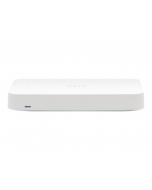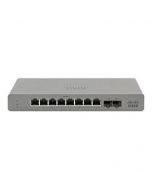How do I Configure Meraki?

So you’ve got your Meraki devices and are ready to revamp your network – now what?
Cisco Meraki’s key feature is its easy setup and deployment, but even the most simplistic of hardware management solutions might require some instructions.
Once connected, all devices can be set up via the Meraki dashboard. To set up your account and current devices all you will need is:
- A Meraki dashboard account and organization: you'll create an organization at the same time you create your account
- An order number for your Meraki purchase or the serial numbers of all devices
- An idea of what you want to do with your devices and how to group them
- An uplink to the internet for your devices with valid firewall rules configured so they can talk to the Meraki cloud
Once an account has been created at https://dashboard.meraki.com and you have obtained all the relevant information from the above list, it’s time to create and configure your network.
Creating your network
Within the Meraki Dashboard, there will be a prompt to ‘Register Meraki Devices’. If you do not see this prompt, then head to Organization > Configure > Create Network.
In this screen you will be prompted to fill out the following:
- Name – Your network identifier, for example ‘London Office’ or ‘Guest Server’
- Network type - Here’s where you choose which type of Meraki devices will be managed in this network. The created network will automatically detect device types, and if multiple device types are added it will create a combined network.
- Devices – An optional step. If you have an order number or device serial number on hand, it can be added here. If not, refer to the Adding Devices and Licenses section you have obtained this information. However, adding a device at this stage will allow you to add it directly to the network. To add a device simply enter the order number or device serial number, one per line, and hit Claim. To add this device to the current network, tick the box beside the serial number.
You can customise this however you see fit based on the requirements of your network, and adjustments can be made at any time.
Creating your Systems Manager Network
This is where you can enrol client devices in Meraki’s EMM to manage settings and security. When presented with the same prompt screen, select Set up Systems Manager. Again, if you do not see this prompt then go to Organization > Configure > Create Network.
Give the network an easily identifiable name, and if the page has a dropdown for network type select EMM (Systems Manager). Once this is done then review the page and click ‘Create Network’.
Now you’ve created a Meraki Systems Manager Network you have free reign to configure profiles, payloads, applications, and so many more endpoint management features. You can combine this network with your hardware networks if you choose to, but it is typically kept separate for administrative purposes. Since endpoint management spans all network variations, it’s pretty standard to create a separate network for these sorts of activities.
Configuring your Network
Now your network has been created, any specific configurations can be managed from the Meraki Dashboard. Meraki devices will automatically download any system updates and latest configuration within two minutes of you saving your configurations. Configuration options vary from device to device, so check out these handy guides for in-depth information specific functionality and setup.
- MR series access points
- MS series switches
- MX series security appliances
- MG Cellular Gateway
- MV series smart cameras
- Z series teleworker gateways
- Systems Manager (SM)
- Meraki Insight (MI)
We hope this has helped answer some questions about configuring your Meraki network. For more information please contact a RedPontem specialist or check out this guide.













